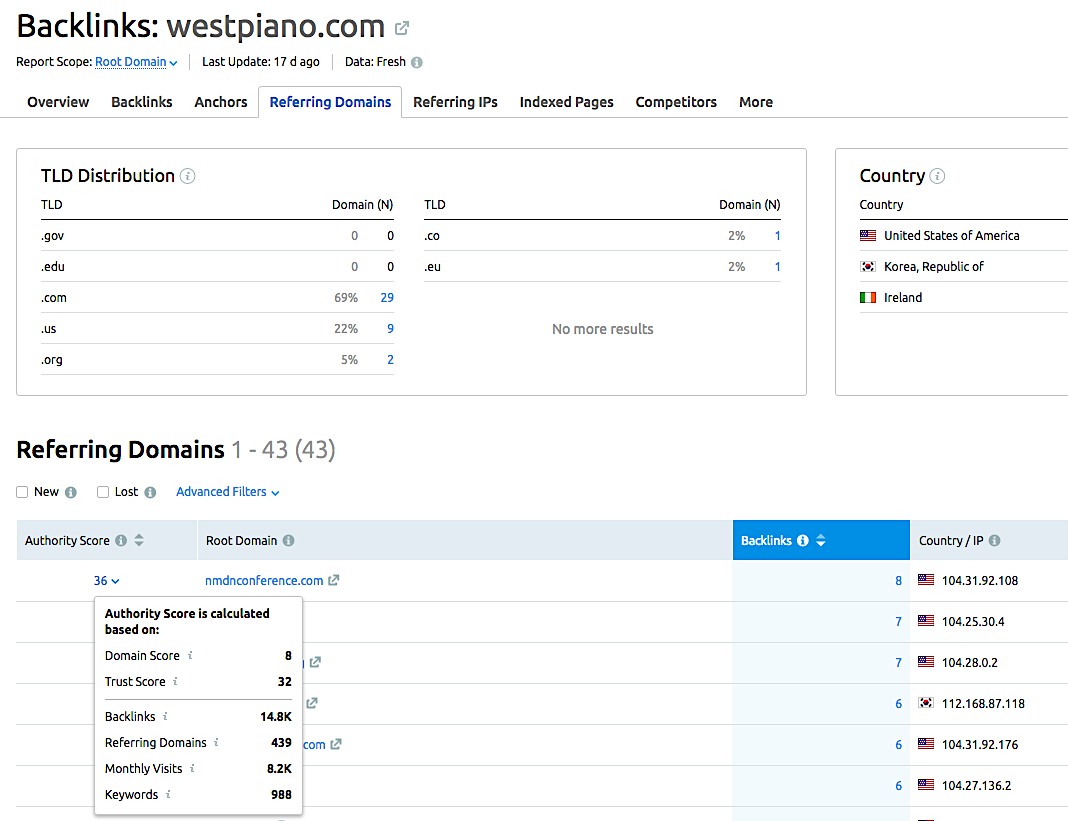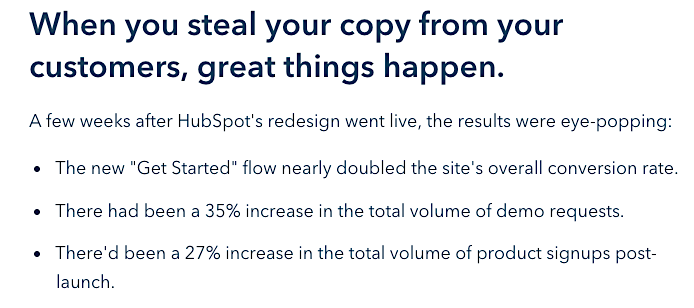UPDATED FOR 2019! This post has been upgraded with fresh, new examples and up-to-date stats. Enjoy!
Mobile devices play a key role in the overall growth of the digital marketing spend worldwide. With a surge in the number of smartphones and tablets, mobile advertising has become a primary mode of digital advertising which is both cost effective and conversion oriented.
According to the IAB Mobile Advertising and Revenue report for 2008 Q2, nearly three quarters of all Internet time (71%) is spent on a mobile device:

So it’s no wonder that the mobile advertising spend now accounts for two-thirds of the overall digital spend.
Google Ads, Facebook and Unity (in Europe, the Middle East and Africa) are the top 3 mobile advertising channels in terms of ROI. Forget just banner ads – mobile advertising formats today include SMS text messages, interactive ads, rich-media ads, push notifications, click-to-call ads and in-app interstitials. The selection of a mobile ad platform depends on your target audience, so it is important to understand the needs of your audience and choose a platform that can offer you the maximum ROI.
Gamifying Mobile Ads
Gamified ads are advertisements that people can interact with as though they were playing a game. For example, if you’re advertising a new app that you produced, you could run gamified ads so that users can interact with, or “play,” your app as they would if they had downloaded it.
Because about two-thirds of Americans play video games and 62% install games on their phones, gamifying ads are a great way to advertise to this audience:

With the Millennial generation having grown up on games, gamified ads are more entertaining and create a better ad experience for users. Consider these facts:
- There are more than 2.5 billion video gamers worldwide
- In the last 5 years, TV/console gamers have dropped from 30% to 26%, while in that same time mobile gamers have increased from 24% to 34%:

- 72.3% of mobile users in the U.S. are mobile phone gamers
- 54% of mobile gamers said they'd rather watch video ads if this leads to in-game rewards
- 23% of U.S. gamers who own smartphones or tablets said they have an average of 3-5 paid games on their devices
- In a study, gamified ads had engagement rates nearly 6% higher than non-gaming ads, and saw a 28.8% click-through rate (compared to just 3.9% for standard ads)
Now that you understand the importance and reach of mobile advertising, here are some of the brands that have excelled in this area. Read on to get inspired, learn from them and implement their ideas to make your mobile ads even better!
Dive Deeper:
- Marketer’s Guide to Mobile App Advertising
- Mobile-First Indexing: Everything You Need to Prepare Your Site For 2019
- 12 Quick Fixes to Make Your Mobile Traffic Convert
- 30 Winning Facebook Ads and Why They’re so Effective
Samsung
When Samsung wanted to promote its Galaxy S6 smartphone, they worked with InMobi to create interactive ads that created a “personalized ‘real-time battery identification' mobile ad unit,” which allowed people to experience what the company was talking about with a relevant demo on their smartphone:
Knowing how important battery life is to most people, they created an expandable interstitial ad to demonstrate this phone's “super fast charging capability” by reaching out to existing customers with the objective of getting them to upgrade to the S6 as well as non-Samsung users.
With “moment marketing, Samsung captured users' at the moment when they most needed this charging capability,” and their CTA button that said “Experience” gave users a personalized ad and relevant demo on the new S6 phone:

This campaign resulted in 1.6% of users tapping on the “Tap to find more” button, 1.1% of users clicking on the “Experience” CTA and an average of 20 seconds spent on the interstitial ad.
Pond's
Pond's, a brand that sells beauty and health care products, partnered with InMobi to create the “world’s first face detecting augmented reality rich media mobile ad.”
This interactive ad allowed people to experience a unique and relevant brand experience in an effort to buy the brand's new Acne 10-in-1 Solution:
In a market that is oversaturated with similar face products, they knew they had to stand out somehow, so they decided to target prospects where they were already spending their time: staring at their smartphones. Using several filters, Pond's made their ad personalized and relevant, and by using the front-facing cameras in everyone's smartphones, they made their ad truly interactive — no downloading anything or visiting another site.
When users looked at their phones, the camera would track the various features of their face and automatically detect the acne-prone areas of their skin — as the user moved their face through augmented reality.
The results of this campaign included 39,000 users interacting with the ad and an average engagement of 29 seconds.
Ruffles
Ruffles is the world-renowned potato chip brand that has been marketed by Frito-Lay since 1961. Recently, its sales started to decline sharply in Brazil and this is when they thought of leveraging the power of mobile to reach audiences.
Ruffles wanted to resonate with teenagers in Brazil between the ages 12 and 18, so they created a mobile-only augmented reality game named AmiGO:

To play the game, “a user activated the camera on their phone and put in headphones. Their friends could see what the phone’s camera saw, while the user saw what the game showed them. Thanks to the game’s augmented reality, friends would see Ruffles chips around the user, and they could send voice commands to guide the user to grab the chips. The user had to follow their friends’ directions since only they could see the Ruffles. The more chips the user grabbed, the more points for everyone. The points went into a weekly ranking, and top scorers were announced on the brand’s social media accounts.”
The campaign, called “Everybody In The Same Package,” was implemented in three stages:
- Hype: High-impact media such as Facebook videos designed to receive broad coverage by partnering with influencers
- Maturity: Peak engagement to spark and encourage conversations about the game
- Decline: As interest waned, content created by influencers was promoted on social media accounts to encourage consumers to play
Ruffles created mobile ads that targeted teens on various social networks in order to promote the game. The success of the campaign included:
- More than 26,000 downloads during the two-month campaign
- The Facebook Live session that was created with soap opera actors and featured Ruffles content received more than 2M views for AmiGO
- Increased sales by 43%
- Users engaged with the app for an average of six minutes every day
- AmiGO was among the 10 most talked about campaigns on Twitter that month
Dive Deeper:
- 8 Tips for Successful Mobile Video Advertising
- How to Produce Paid Facebook Video Ads for Mobile Like a Pro
- How to Target Your Mobile Users with Push Notifications
GAP
To connect with Millennials, American clothing and accessories retailer GAP created an ad on Instagram that showcased a decade long archive of the world’s top logos:
GAP showcased its new collection and enabled viewers to become a part of the logo remix launch with an energetic full-screen carousel ad in Instagram Stories with short-form, vertical videos that are idea for mobile viewing.
The 19-day ad campaign was an instant hit that saw a 73% higher click-through rate than in its past Instagram ads and a 4-point rise in message association.
Nissan
Nissan, the Japanese multinational automobile manufacturer, leveraged the power of the mobile touch screen in a brilliant manner to generate engagement for its compact SUV ad (note, this is just the regular video ad):
The Evil Snowmen ad had a video featuring Nissan's Rogue SUV that fought a gang of snowmen. The ad had various hotspots that users could tap on their mobile screen in order to learn about the features of the car. The tablet ad also had five hot spots, with content highlighting statistics on winter weather and snow safety.
Juice Mobile ran this 60-second video ad on its network, which saw a 78% completion rate and a 93% engagement rate.
Dive Deeper:
- 4 Essential Steps to Create a Go-To-Market Plan For Your Mobile App
- Top 10 Mobile Optimization Best Practices For E-commerce Sites
- 15 Thought-Provoking Statistics about Mobile Commerce [Infographic]
Starbucks
Whether you're a coffee aficionado or not, there's no denying that Starbucks has always led the way when it comes to keeping up with the times and giving their customer base what it wants.
Although they launched their mobile app years ago, it now has more users than Apple’s or Google’s mobile apps and has the most regularly used loyalty rewards app than any other restaurant chain.

To ensure success in today's digital age, their mobile app offers:
- Special offers/free stuff. Offering incentives like birthday gifts, loyalty discounts and complimentary beverages increased engagement among its customers.
- Loyalty program. People love free stuff, and if they know they can receive a free drink or food item after they've purchased a certain number, they're more inclined to buy more stuff. This accounts for 39% of U.S. sales.
- Notifications. Customers can fill out surveys on their phone (and earn more rewards stars) and get notifications when a special is going on.
- Mobile ordering/paying. Avoid the lines, order ahead and pay on your phone. What's not to like? Because Starbucks is so busy during the morning rush before work, this feature is particularly successful. This accounts for 12% of its transactions in the U.S.
- Personalization. As we know, when you personalize something, it increases customer engagement. More recently, they added in-store music playlist to the app, which means that customers can check out which song is playing while they're visiting any store. They can also access the playlist through Spotify after leaving the store.
As per Retail TouchPoints, it's clear that Starbucks will “continue its dominance over other mobile payments platforms through 2022.”
Snickers
Snickers is a chocolate bar from Mars, Incorporated that partnered with Spotify to create an ad that targeted users when they listened to songs out of their usual genre on the music streaming service.
The goal of the Snickers “You're Not You When You're Hungry” campaign was to make their chocolate bar the obvious choice during consumers’ “hungry moments.”

Key performance indicators for the campaign included:
- Increase year-on-year sales
- Interaction with the Hunger Hits playlist
- Reach
- Impressions
- Social engagement with the campaign
Using Spotify’s streaming data, Snickers was able to pinpoint users who were not listening to their normal genre of music and then in that micro-moment deliver their audio ad. The idea was impressive and it caught users by surprise, who were then driven to Snickers branded playlist named “The Hunger List”.
Most Spotify customers listen to music on their mobile devices and “mobile listening is a 100 percent logged-in experience, which generates the streaming intelligence required to make campaigns like “Hunger Spotter” possible.”
The campaign was able to generate 78,861 total clicks, 1,710,564 unique reach and 6,805,995 overall impressions.
Doctor Who
Doctor Who is a British science-fiction TV show that's been on the BBC since 1963. In order to promote a new season of the show, mobile advertising agency Mobext used Doctor Who as a “sidekick” to content on a set whitelist of high-profile websites.
The ad showcased the doctor persuading readers to expand the ad, which then displayed a “flip cube” format displaying all the show’s characters.
The campaign was an instant hit, generating 45,000 engagements at a rate of 2.5% and a 4% expansion rate. It also won an award at the Effective Mobile Marketing Awards (EMMA) for Most Effective Rich Media Campaign in 2017.
Headspace
Headspace is an English-American online healthcare company that specializes in meditation and users can download the app and learn to meditate as well as be mindful. More than 40 million people suffer from stress in the U.S. alone, and research shows that regular meditation helps keep stress levels down.
Headspace targeted Instagram users who may be suffering from anxiety with this colorful ad:

The ad uses fun cartoon-style storytelling to encourage users to try their app and reduce their anxiety levels in as little as 10 minutes. It's eye-catching, the design is simple, and the message is ultra clear, and anyone who lives with anxiety is sure to stop and watch the ad.
Dive Deeper:
- 14 Ways to Kickstart Your Mobile Email Marketing Campaign
- How to Increase Mobile Conversions With Facebook Lead Ads
- 13 Best Super Bowl Ads of all Time: What Your Business Can Learn from Them
Netflix
Netflix, the world’s leading entertainment service provider with over 151 million paid subscriptions worldwide, won the Drum Mobile Award for the category “most innovative use of mobile.” The company captured the attention of viewers by creating a super realistic advertising experience that was both haunting and adventurous.
In the campaign, Netflix mimicked the fear that people experienced after watching an episode of the popular techno-paranoia drama Black Mirror. The mobile screen of the viewers resembled a broken piece of glass as though they were living in the show.

The ad was an instant hit and Netflix was able to capture the attention of both new and previous Black Mirror viewers.
Conclusion
Mobile advertising is the current hope for the entire advertising industry. The money spent by advertisers on mobile is way higher than any other digital advertising platform, so if you want to reach the Millennial and Gen Z audiences, then mobile should be your preferred platform for advertising.
The groundwork for 5G is already being laid and mobile speeds are set to become 20 times faster when compared to the current 4G speed. Videos and augmented reality will continue to mature with time and mobile advertising will become more of an immersive experience.
The above article showcases some of the best mobile advertising campaigns delivered by some of the best brands around the world. You can take these ideas and innovate your mobile ad strategy to take your business to the next level.
The post 11 Companies That Are Doing Mobile Advertising Right in 2019 appeared first on Single Grain.
from Single Grain https://ift.tt/2mPMW4H

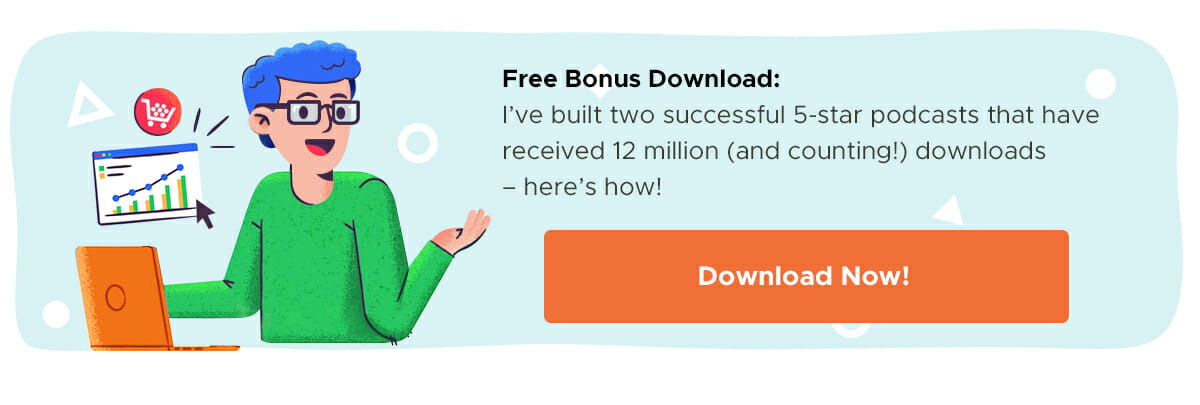




 We’re building voice-activated content strategies for our clients here at
We’re building voice-activated content strategies for our clients here at 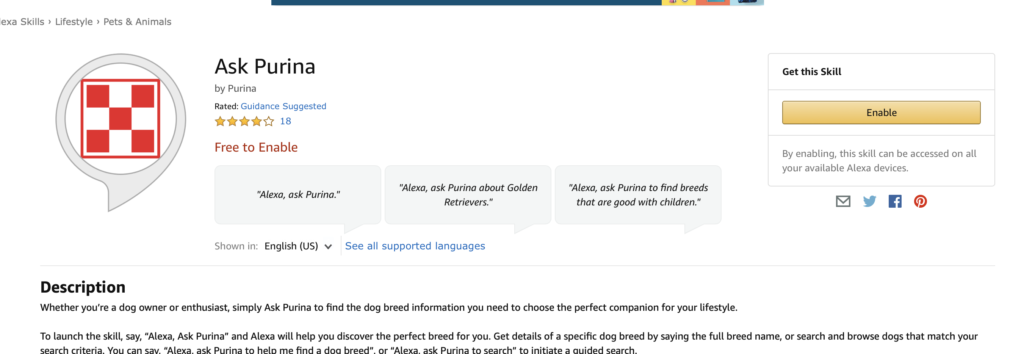

 Many of the newly purchased smart speakers include screens, and the Amazon Echo Show and Google Home Hub devices are routinely priced below $100.
Many of the newly purchased smart speakers include screens, and the Amazon Echo Show and Google Home Hub devices are routinely priced below $100.
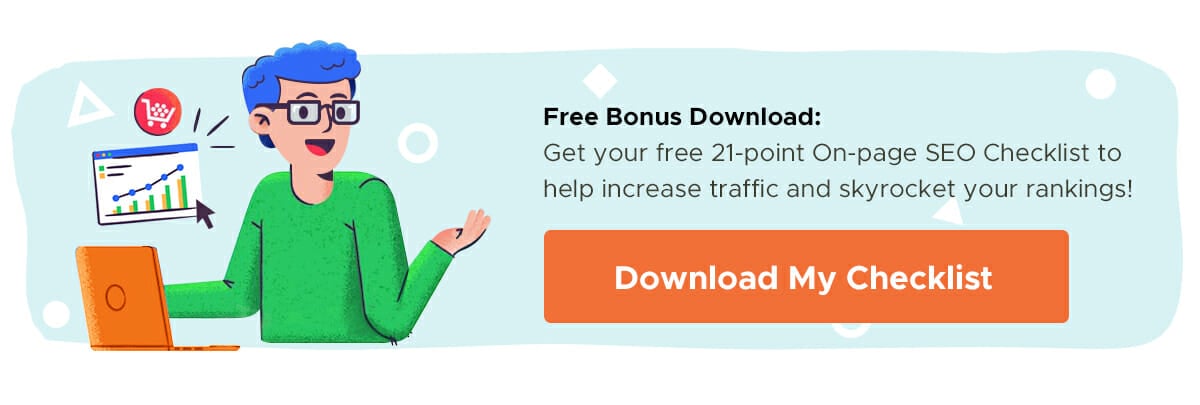
 This is an individual post on his website and it generates over 1,000 visits per month and ranks for over 450 keywords. How many blog posts have you seen generating that much traffic and ranking for so many terms?!
This is an individual post on his website and it generates over 1,000 visits per month and ranks for over 450 keywords. How many blog posts have you seen generating that much traffic and ranking for so many terms?!






